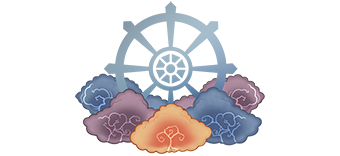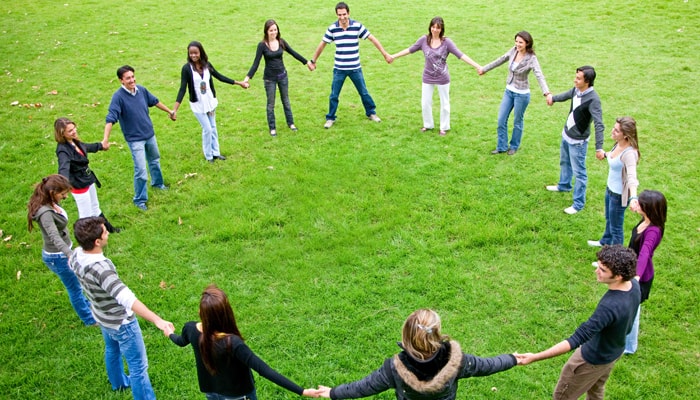Article: Relationship as a Vehicle for Consciousness
Article: Relationship as a Vehicle for Consciousness
By Isa Gucciardi, Ph.D.
Summary: By making us aware of the effect our actions have on others, relationships can help us inquire into our deeper motivations and intentions so that we can make more conscious choices.
Relationship forms the core of our experience as humans. We define ourselves and are defined by the nature of our relating. The Buddhist concept of interdependence affirms that nothing exists independently. Everything exists interdependently. In relationship, we do not and cannot exist independently of one another.
It is through relationship that we come to know ourselves. It is through relating that we hold up a mirror to others for them to come to know themselves. Others do the same for us, providing us with information about ourselves that we could not see without the lens of relating. In this way, relationship provides us with a path of revelation. As we learn more about ourselves, our experience takes on richer meaning.
In the Mind Only School of Buddhism, it is understood that everything we experience in our external world is function of our mind, or our internal world. This internal world is difficult to see and understand if it is not projected onto external reality. We generate relationships as we project aspects of our internal worlds outward. By examining the nature of these relationships and the ways in which we act and react in them, we begin to perceive aspects of ourselves that would remain hidden otherwise.
When we look at how we function in relationship, our habitual ways of reacting are among the first things we notice. Our habitual ways of functioning create our experience of reality to such an extent that we often do not realize that the experience of reality they they create is not objective. We often do not realize that others are not experiencing reality the same way we are until we start interacting with them and find that their priorities are not our priorities. In examining our reaction to this gap in experience, we begin to perceive that our habits of reacting are forming our reality.
Our habits of reacting are, in Buddhist thought, a function of something called karma. Karma refers to the consequences of actions. All actions are the consequence of previous actions, and all actions generate consequences. When we are unaware of the consequences of our actions, we tend to make choices in poorly informed ways. Simply put, the forces of karma help us become aware of the consequences of our actions.
When we become aware of the consequences of our actions, we become more aware of our motivation. As we become more aware of our motivation, we learn more about our intentions. And as we learn more about our intentions, a window opens into a deeper level of our inner world.
One of the first ways we become aware of the consequences of our actions is through the effect our actions have on other people. The way we react to others actions also shows about our habitual response. This is the dance of karma that is hidden in all of our inter-relating. If we learn the steps to this dance we become aware of the nature of our karma.
In Buddhist thought, this dance takes place over a series of lifetimes. The actions we take in one lifetime may have consequences in another. If we are unaware of our intention and motivation, we lose control over the way we participate in this dance. Buddhist practice is designed to make people aware of their intention and motivation so they can participate in this dance more consciously – or even choose not to participate at all, by dissolving all the karmic actions and reactions that have been generated from one lifetime to the next.
Obviously, this is a big task, and we need all the help we can get to undertake it. Within this context, the information we receive through our interrelating becomes quite crucial. Without the information our interrelating provides us, we do not become aware of the consequences of our actions. Therefore, we are not motivated to look at our intention. If we don’t look at our intention we cannot know how our actions are generating karma. If we do not understand the forces that are driving us karmically, we become imprisoned in unconscious action and reaction.
In Buddhism this is called samasara. Samsara is the consensus reality we all share. In Buddhist thought, this is generally considered to be a reality that is dominated by suffering. This suffering is caused by our habitual reaction to reality. Our habitual reactions are based on our desires, our aversions and the way we remain unconscious about what is motivating our desires and aversions.
We emerge from the suffering generated by the unconscious choices we make, first, by understanding the consequences of those choices. Through their reactions to our choices, others give us important information about our desires and aversions and what is motivating them. So, it is through relationship we become more conscious. Relationship, then, becomes a vehicle for expanding consciousness.
The Dance of Karma
As we become aware of the effect our habitual reactions have on others, the patterns of our karma are revealed. Our karmic patterns are made up of our aversions and desires. As we react negatively or positively to others, we become aware of our aversions and desires. There is a popular saying “Opposites attract.” In understanding the dance of karma, this concept is helpful. Often, people who have opposite reactions to the same events attract each other.
Further, these opposite reactions to external events are also opposite reactions to internal events. Often, the response to internal events is hidden until it is played out in the response to external events. When someone has the opposite reaction to something than our own, our habitual response is relief. From this place, it is easier to see the karmic patterns driving the habitual response.
Karmic patterns are complex patterns of energy that are part of every individual’s psychic make up. They can be conceived as patterns of energy. The type of energy in the pattern is a function of the nature of the intention and the motivation behind action. Karmic patterns are also made of the patterns of energy that are held in the individual’s reactions. Karmic patterns are made up of the energy in action and reaction.
The same action occurring on the surface level of relating can have two different karmic patterns. For instance, consider two situations where a person is killed. In one situation, the person who dies is killed by someone who hated them and wanted to harm them. The killer is happy the person is dead and feels justified in the killing. In the second situation, the person who dies is killed by someone accidentally, during a lapse of attention, perhaps in a car accident. The “killer” is distraught and seeks to make amends to the dead person’s family.
On the surface level of relating, one person has killed another. But the motivation and intention behind the same action in each case is different. The energy in the intention in each case is also different. Even those who are not “tuned” to perceiving events on an energetic level can experience that hatred has a different quality of energy than neglect. The action and reaction in both cases have very different energetic patterns even though the action looks the same.
The karmic patterns of the killer who hates are different than those of the killer who has difficulty paying attention. Their action looks the same on the surface, but that action is generated by different intention. The karmic patterns that hold that intention are also different.
The effect each killer’s intention has on the person they kill is also different. Each set of intentions creates a different pattern of response in the one who is killed, and the pattern of response creates a different dance of karmic pattern in each set of individuals.
It is important to note that we are talking about the energy in only one set of intentions in one relationship leading to a set of actions and reactions in each of these person’s lives. Each of these individuals has multiple relationships where karmic patterns get generated and acted out.
We are all involved in a complex web of relating generated by our previous karmic conditioning that creates reactions complementary to the patterns held in our karma. The dance of karma and the patterns that dance creates are revelations of our intention. The killer in the first case may have the experience of seeing the effect their hatred creates in the grief of the family of the person they killed. It may cause them to look at the intention behind their self-righteousness. They might then seek to change the energy driving the intention. This would create a change in the energy they are using to generate intention and would create a change in patterns of relating that are driven by karma. Or they may become hardened to the grief of the dead person’s family. Another set of energetic patterns, with different karmic consequences, would arise out of that decision.
Given the complexity of our situation on a karmic level and given the amount of attention and effort that is required to change the patterns of our karma, most of us turn over and go to sleep. We prefer to remain unconscious about how these patterns of energy are moving through us. If we make this choice, we lose the opportunity to wake up and see the effect our karma has on us that our actions in relationship provide. Most of us lose consciousness about ourselves in this process.
This desire to duck the task of unraveling the effect of our karma leads us into patterns of relating that may look like they will relieve us of this task, but actually entangle us more deeply in those patterns. The issue of personal responsibility becomes important here.
If we don’t take responsibility for our intentions, motivations, and actions, we entangle ourselves in a tangle of webs of karmic relating we may never emerge from. This is one of the reasons the issue of personal responsibility is so emphasized in Buddhism. If we don’t take personal responsibility for our situation, we remain caught in samasara – incarnating into situations that are dictated by our previous actions and reactions. The good news is that, if we can take responsibility for the decisions we make in relating to others, we can change our experience of relationship and step into a more expansive way of being with ourselves and with others.

